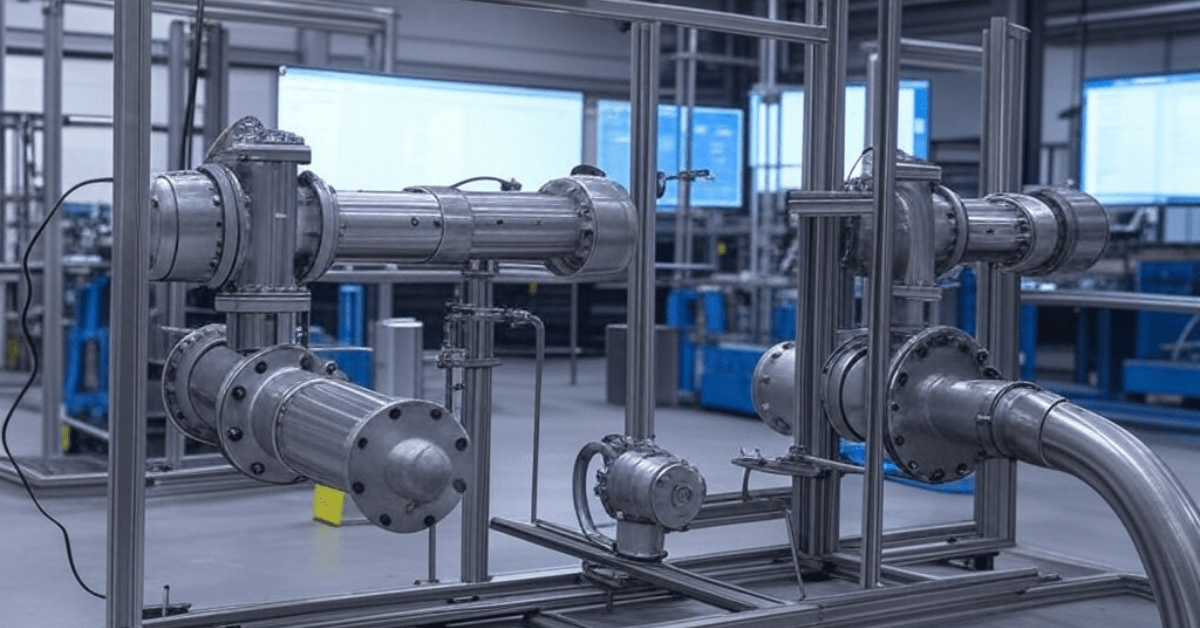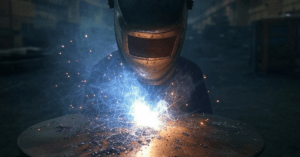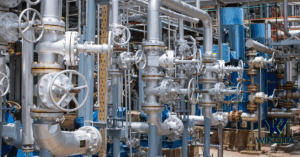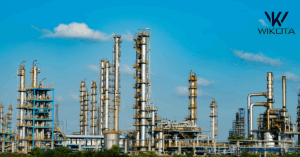In the industrial world, efficiency, flexibility, and cost-effectiveness are essential to meeting the demands of complex projects. Modular skid fabrication is a process that checks all these boxes, providing a streamlined solution for industries such as oil and gas, chemical processing, water treatment, and power generation. By assembling equipment, piping, and components on a portable, self-contained frame, modular skid fabrication allows companies to install, move, and maintain systems with ease. Here’s an in-depth look at the process of modular skid fabrication and why it’s an effective solution for a wide range of industrial applications.
What is Modular Skid Fabrication?
Modular skid fabrication is the process of building compact, fully-equipped systems on a skid—a steel frame or base that allows for easy transportation, installation, and integration with other systems. These modular skids contain all necessary components for specific processes, such as pumps, pipes, valves, heat exchangers, and control panels, pre-assembled and pre-tested in a fabrication facility.
The modular nature of these skids makes them versatile, as they can be designed and fabricated for various applications, moved as needed, and scaled up or down based on project requirements. Once fabricated, modular skids are transported to the installation site, where they can be connected to other skids or systems, simplifying the setup process.
The Process of Modular Skid Fabrication
The process of modular skid fabrication involves several detailed steps to ensure that each skid meets the precise specifications, safety standards, and performance needs of the project. Here’s a closer look at each step in the fabrication process:
- Initial Design and Engineering
The fabrication process begins with comprehensive planning and design. Engineers work closely with project managers and clients to develop detailed designs and 3D models of the skid, specifying every component’s placement, size, and configuration. The design phase ensures that the skid will fit seamlessly with other systems on-site and meet all technical requirements.
– 3D Modeling and Simulations: Engineers create 3D models to visualize the skid’s layout, check for spatial constraints, and identify any potential issues in advance.
– Material and Component Selection: During this phase, materials, piping, and equipment are chosen based on the process requirements, such as temperature, pressure, and corrosive resistance.
- Material Preparation and Cutting
After finalizing the design, fabrication begins with the preparation and cutting of materials. This step includes cutting pipes, steel frames, and other materials to the correct dimensions based on the design specifications.
– Precision Cutting: CNC machines, plasma cutters, and saws are used to ensure that materials are cut with accuracy, allowing for precise assembly later in the process.
– Bevelling and Shaping: Pipe ends are bevelled and shaped to ensure secure welds, which is especially critical for high-pressure systems.
- Component Assembly
Once materials are prepared, the assembly process begins. In this step, technicians assemble the structural frame, mount equipment (such as pumps and valves), and install piping and fittings. The skid is built as a standalone, self-contained unit, complete with all necessary components.
– Piping and Equipment Mounting: Pipes and fittings are installed according to the design, and each piece of equipment is mounted onto the skid frame.
– Alignment and Positioning: Components are carefully aligned to prevent any issues during installation, ensuring a smooth, functional flow of materials and fluids through the skid.
- Welding and Joining
Welding is a critical step that secures the pipes and equipment on the skid. Technicians use a variety of welding techniques, such as MIG, TIG, or arc welding, to create strong, durable connections. This step ensures the skid’s stability and structural integrity, especially for systems that handle high pressures or extreme temperatures.
– Quality Welding: Skilled welders ensure each joint is welded to withstand the specific operating conditions of the skid.
– Leak Testing: Welded joints are often tested for leaks or weak points, which can be identified and corrected before further assembly.
- Electrical Wiring and Instrumentation
Once the mechanical assembly is complete, the skid is fitted with electrical wiring, control panels, and instrumentation required for operation. This may include sensors, gauges, flow meters, and other monitoring devices that help ensure the skid’s functionality and safety.
– Control Systems Integration: Skids are often equipped with control systems, enabling remote monitoring and automation as needed.
– Safety Devices: Components such as pressure relief valves and emergency shutoffs are added to ensure operational safety.
- Testing and Quality Control
Before being shipped to the installation site, modular skids undergo rigorous testing and quality control checks. This ensures that each skid functions correctly, meets all design specifications, and adheres to industry standards.
– Hydrostatic and Pressure Testing: These tests are used to check for leaks and verify that the skid can withstand operational pressures.
– Electrical and Functional Testing: The control systems, wiring, and instrumentation are tested to ensure all electrical components work as intended.
– Documentation and Compliance: Testing results, material certifications, and quality records are documented, providing proof that the skid meets regulatory and client standards.
- Transportation and Installation
Once testing is complete, the skid is ready for transportation to the installation site. Modular skids are designed to be compact and easy to transport, making them an ideal choice for remote or difficult-to-access locations.
– On-Site Positioning: Skids are lifted and positioned as per the design layout, allowing for fast and accurate placement.
– System Integration: Once in place, the skid is connected to other skids or systems on-site, creating a fully functional system that’s ready for immediate operation.
Why Modular Skid Fabrication is Effective
Modular skid fabrication has gained popularity across industries for its versatility, efficiency, and quality control. Here’s why this approach is so effective for industrial applications:
- Time and Cost Savings
By assembling equipment and components on a skid in a controlled environment, companies can significantly reduce on-site installation time and labor costs. Modular skid fabrication eliminates much of the fieldwork, which translates into lower project costs and shorter completion times.
– Reduced Installation Time: Pre-fabricated skids require minimal on-site assembly, allowing for quicker installation.
– Lower Labor Costs: Reduced need for on-site labor minimizes expenses related to fieldwork and supervision.
- Improved Quality and Consistency
Since skids are fabricated in a controlled environment, manufacturers can maintain high quality and consistency in each skid. Skilled technicians, advanced tools, and strict quality control measures ensure that each skid is built to the same high standards, reducing the likelihood of installation errors or operational issues.
– Rigorous Quality Control: Each skid is thoroughly tested before shipping, ensuring reliable performance.
– Precision Fabrication: Controlled shop conditions provide a consistent quality that can be challenging to achieve on-site.
- Enhanced Flexibility and Scalability
Modular skids are highly flexible and can be designed to meet specific needs. This modular approach allows companies to add, remove, or modify skids as their operational requirements change, making it easy to scale up or adjust systems without major redesigns.
– Customizable Design: Skids can be configured to meet unique project requirements, adapting to site and system needs.
– Easy Expansion: Adding new skids or integrating additional systems is straightforward, making expansion simple.
- Safety and Risk Reduction
Because much of the fabrication work is done off-site, modular skid fabrication reduces the number of workers required on-site and minimizes the hazards associated with on-site welding, cutting, and assembly. This leads to safer work environments and lower risk for workers.
– Controlled Fabrication: By working in a controlled facility, technicians reduce exposure to on-site hazards.
– Reduced On-Site Disruptions: On-site risks, such as handling heavy equipment or hazardous materials, are minimized.
- Ease of Maintenance and Mobility
Modular skids are designed for accessibility, simplifying routine maintenance and repairs. Additionally, these skids are portable, allowing companies to relocate or repurpose them as needed without disrupting operations.
– Effortless Maintenance: Modular skids offer easy access to all components, facilitating inspections and repairs.
– Portable and Reusable: Skids can be moved to new locations or reused for other projects, enhancing their value over time.
Final Thoughts
Modular skid fabrication is a practical, efficient solution that meets the complex needs of modern industrial applications. By pre-assembling essential equipment and systems on compact, portable skids, companies can save time, reduce costs, and enhance quality. With benefits ranging from flexibility and scalability to improved safety and maintenance, modular skid fabrication is an effective strategy for industries seeking reliable, adaptable solutions.
For projects that require high-quality equipment with streamlined installation and maintenance, modular skid fabrication provides a proven, versatile approach. Working with an experienced skid fabrication provider ensures that each skid meets industry standards, safety requirements, and project specifications, delivering reliable performance in the most demanding industrial environments.
Fabrication Services, and let’s build something strong together.
Contact us today to learn how Wikota’s Fab Shop can help with your fabrication needs.
Serving North America – We ship completed projects anywhere in the US.




